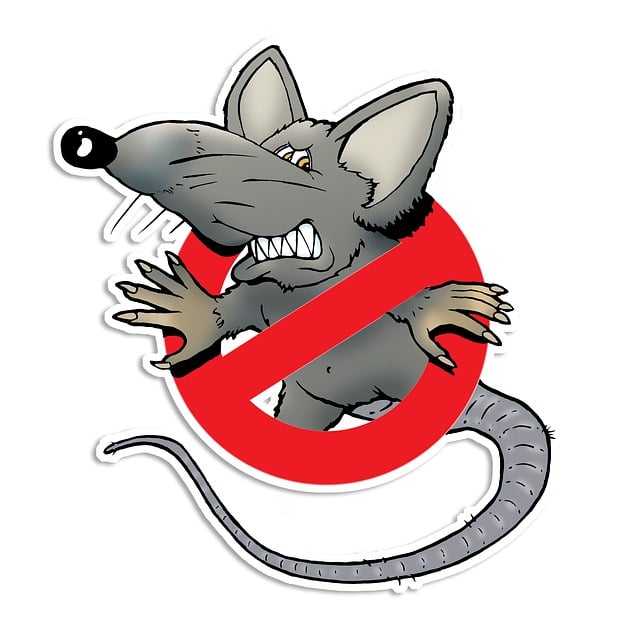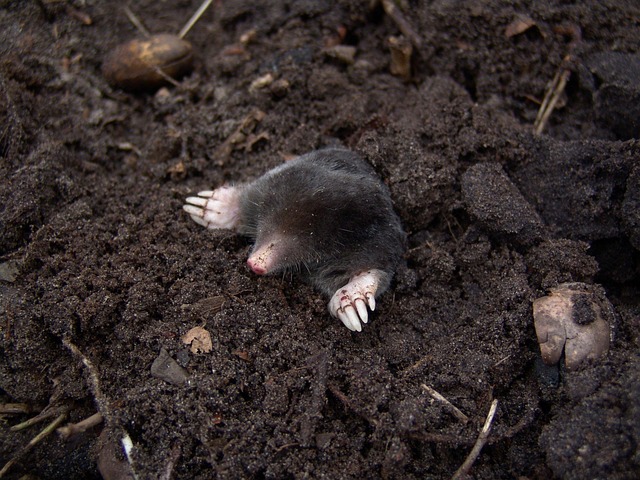Understanding rodent behavior is crucial for effective rodent control. Rats and mice enter homes through dark, tight spaces, primarily at night. To prevent infestation, seal entry points like gaps in walls and doors, use physical barriers, and conduct regular inspections. Combine this with good sanitation, food storage practices, repellents, traps, and chemical solutions. For severe or persistent infestations, professional rodent control services are recommended for advanced techniques and tailored treatments. Ongoing maintenance includes cleaning, sealing entry points, trapping, and following manufacturer guidelines for baits.
Effective rodent prevention is a multifaceted approach that combines understanding rodent behavior, identifying entry points, and implementing robust strategies. This article guides you through every step, from recognizing common rodent species and their habits to adopting best practices in sanitation and food storage. We explore various methods, including physical barriers, traps, repellents, and professional rodent control services. Discover preventive measures and ongoing maintenance tips for long-term protection against these persistent pests, ensuring a safer, healthier environment.
Understanding Rodent Behavior and Entry Points

Understanding rodent behavior is a crucial step in implementing effective rodent control. These creatures are intelligent and adaptive, often finding their way into homes through various entry points. They prefer dark, tight spaces where they can build nests and establish territories. Rodents are primarily nocturnal, so they’re most active during the night when they forage for food. Knowing this behavior allows property owners to take proactive measures by sealing off potential entryways, such as gaps in walls, floors, or doors, especially during their high-activity periods.
Identifying common entry points is essential for successful rodent prevention. Common access points include utility pipes, vents, and cracks in the foundation. By using physical barriers like steel wool or metal mesh to seal these openings, you can significantly deter rodents from gaining access to your space. Regular inspections are also beneficial to identify new entryways that may form over time due to structural changes or weather damage.
Identifying Common Rodent Species and Their Habits

In the realm of rodent control, understanding your adversaries is half the battle won. The most common rodents that invade homes and businesses include rats (Rattus spp.) and mice (Mus spp.). These species exhibit distinct habits that homeowners and commercial property managers must recognize to implement effective prevention strategies. Rats, known for their excellent swimming and climbing abilities, often enter buildings through plumbing vents, broken pipes, and small openings in exterior walls. Mice, on the other hand, prefer to squeeze into tight spaces, such as cracks and crevices, and are particularly drawn to areas with readily available food sources.
Identifying their preferred entry points and habitats is crucial for setting up strategic traps and barriers. For instance, sealing off potential access points like gaps around pipes and vents can deter rats from invading. Similarly, keeping floors clean, storing food in airtight containers, and securing garbage bins tightly can minimize attractive odours that lure mice. By combining these habits-based insights with the right tools and techniques, homeowners and businesses can significantly enhance their rodent control efforts.
Implementing Physical Barriers and Exclusion Techniques

Implementing physical barriers and exclusion techniques is a cornerstone of effective rodent control. By blocking entry points, such as gaps in walls, floors, or ceilings, you significantly reduce the risk of rodents gaining access to your space. Steel wool, metal mesh, and concrete are excellent materials for sealing these openings, ensuring that even the most persistent pests struggle to find their way in.
These physical barriers not only prevent initial intrusion but also deter rodents from re-entering after removal. Exclusion techniques focus on making your environment inhospitable for rodents by eliminating hiding places and food sources. Regular cleaning, proper waste management, and securing all food items tightly are essential practices that, combined with robust physical barriers, can create an impenetrable defense against rodent infestations.
Sanitation and Food Storage Practices for Rodent Prevention

Maintaining proper sanitation and food storage practices is a fundamental aspect of effective rodent control. Rodents are attracted to food sources, so keeping your space clean and free from potential meals is crucial. Store all food in airtight containers, especially grains, nuts, and dried goods. Regularly empty wastebaskets and ensure outdoor trash cans have tight-fitting lids. Clean up any spills or crumbs immediately, and avoid leaving dishes unwashed for extended periods.
In addition to this, proper sanitation involves keeping your environment neat and tidy. Remove potential hiding spots by decluttering, especially in areas where food is stored or prepared. Seal entry points and gaps around pipes, doors, and windows with caulk or steel wool to prevent rodents from gaining access. Regular deep cleaning, including scrubbing floors and wiping down surfaces, can also deter rodents, as they prefer environments free from dust and debris.
Using Repellents, Traps, and Other Chemical Methods

Rodent control is a multifaceted approach, and one of the primary methods involves employing repellents, traps, and chemical solutions. These tactics offer effective ways to deter and manage rodent infestations. Repellents, for instance, can be natural or synthetic substances that rodents find unpleasant, driving them away from treated areas. Common examples include peppermint oil, chili peppers, and certain herbs.
Traps play a crucial role in rodent control, providing a physical barrier against these pests. There are various types of traps available, including snap traps, live traps, and glue traps. Chemical methods, such as the use of insecticides and poisons, can also be employed but must be handled with care to avoid potential health risks and environmental contamination. These approaches often work best when combined, creating a multi-layered defense against rodents, which are adept at adapting and overcoming single-method strategies.
Professional Rodent Control Services: When to Seek Expert Help

Many homeowners attempt DIY methods for rodent control, but there are times when professional intervention is necessary. Seeking expert help from rodent control services is beneficial when dealing with severe or persistent infestations. These professionals have the knowledge and tools to swiftly and effectively eradicate rodents, ensuring your home remains pest-free.
Professional rodent control specialists employ advanced techniques, including specialized equipment, traps, and targeted treatments, tailored to specific species and environments. Their expertise lies in identifying entry points, understanding rodent behavior, and providing long-term solutions. This is especially crucial for complex or hard-to-reach areas where DIY methods might fail. By enlisting their services, you benefit from a thorough inspection, immediate action, and personalized advice on preventing future infestations.
Preventive Measures and Ongoing Maintenance for Long-Term Protection

Implementing effective rodent control goes beyond a one-time solution; it requires a comprehensive strategy of preventive measures and ongoing maintenance for long-term protection. Regular inspections are key to identifying potential entry points, such as gaps in walls, floors, or windowsills. Sealing these openings with materials like steel wool or caulk prevents rodents from finding their way inside. Additionally, maintaining a clean environment by promptly addressing food waste and storing items securely can significantly deter rodents, as they are attracted to easily accessible food sources.
Ongoing maintenance includes regular cleaning, especially in areas prone to clutter, which provides hiding spots for rodents. Traps and baits should be strategically placed and regularly checked and replaced according to manufacturer guidelines. Professional pest control services can also provide valuable insights and customized solutions tailored to specific needs, ensuring a rodent-free environment that is both safe and efficient.
